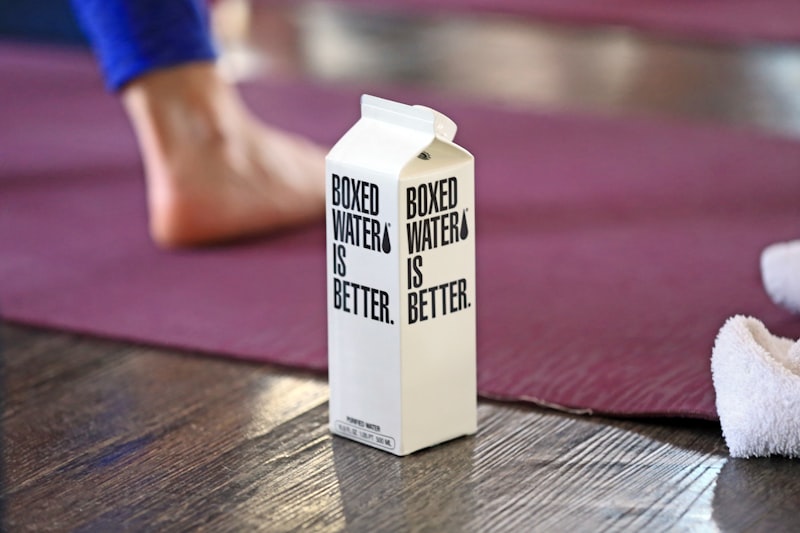What Are the Signs of Iron Deficiency?
So, what are the telltale signs that you might need more iron? First off, if you’re feeling constantly exhausted even after a full night’s sleep, it could be more than just stress. Iron deficiency often leaves you feeling drained and lethargic because your body isn’t getting enough oxygen. You might also notice your skin looking unusually pale or even a bit yellowish. This happens because iron is crucial for producing red blood cells, which give your skin that healthy glow.
Another red flag is shortness of breath. If climbing a few stairs leaves you gasping for air, it’s time to take note. Iron deficiency can make your heart work harder to pump oxygen throughout your body, leading to breathlessness.
Brittle nails and hair loss are also clues. Iron is essential for maintaining the health of your hair and nails. When you’re low on iron, these can become weak and break easily. And if you’re feeling irritable or have trouble concentrating, it’s not just in your head—iron deficiency can affect your mood and cognitive function.
Lastly, some people experience unusual cravings for non-food items, like ice or dirt, in a condition known as pica. If you find yourself craving these oddities, it might be your body’s way of signaling an iron shortage.
Spot the Signs: How to Identify Iron Deficiency Early
But wait, there’s more. Pale skin can also signal iron deficiency. If you notice that your skin looks a bit more like a ghost than usual, it’s time to pay attention. Iron is crucial for producing hemoglobin, which gives blood its red color. Less iron means paler blood and, thus, paler skin. It’s like seeing a fading sunset; it’s a sign that something’s off.
Frequent headaches or dizziness can be another red flag. When your brain isn’t getting enough oxygen—thanks to low iron—it’s like trying to drive a car with a clogged air filter. Your head might start to throb or spin, signaling a need for more iron. Similarly, shortness of breath during activities that were previously easy for you can indicate that your body isn’t transporting oxygen efficiently. It’s like trying to run a marathon in slow motion.
Lastly, brittle nails and hair can also point to iron deficiency. If your nails are breaking easily or your hair seems to be falling out more than usual, consider that your iron levels might be low. Your body is trying to prioritize vital organs over these less critical areas, and it shows in your appearance.
Spotting these signs early can help you tackle iron deficiency before it spirals out of control.
Iron Deficiency Warning: Key Symptoms You Should Never Ignore
First off, persistent fatigue might be your body’s way of saying it’s running low on iron. It’s more than just feeling tired after a long day; this fatigue is deeper, like dragging your feet through molasses. If you’re constantly exhausted despite ample rest, iron deficiency might be the culprit.
Paleness is another red flag. Picture your skin as a canvas that reflects your internal health. When iron is scarce, your complexion might turn a noticeable shade of pale. This isn’t just a slight change – it’s a noticeable difference in color, like a faded photograph.
Shortness of breath and dizziness are also common. If you find yourself winded from activities that used to be effortless, or if you feel light-headed even when sitting still, it’s time to take note. These symptoms occur because your body’s not getting enough oxygen to where it’s needed.
Don’t overlook brittle nails and hair loss either. Iron deficiency can make your nails as fragile as thin paper and your hair as sparse as autumn leaves. If your nails are breaking easily or your hair is thinning without any obvious cause, iron might be the issue.

If any of these symptoms resonate with you, it’s essential to consult a healthcare professional to address the root cause. Ignoring these warning signs could lead to more serious health issues down the line.
From Fatigue to Paleness: Recognizing the Tell-Tale Signs of Iron Deficiency
Fatigue is one of the first red flags. If you find yourself dragging through the day, struggling to stay alert, it could be more than just a lack of sleep. Iron deficiency deprives your blood of the oxygen it needs to energize your cells, leaving you feeling drained. It’s not just about feeling tired—it’s about feeling exhausted after minor tasks that previously seemed easy.
Paleness is another key indicator. When you have enough iron, your blood is rich and red, which gives your skin a healthy glow. With low iron levels, your blood becomes less vibrant, and your skin may take on a noticeably pale or even slightly yellowish hue. It’s like comparing a vibrant, full-color photograph to a faded, black-and-white one.
Don’t overlook other subtle symptoms, like brittle nails or hair loss. These might seem like small annoyances, but they can be a clue that your body is struggling due to insufficient iron. Think of iron as a vital ingredient in a recipe for health—without it, the end result is less satisfying and less nourishing.
So, if you’re experiencing these symptoms, it might be time to take a closer look at your iron levels. After all, catching iron deficiency early can make all the difference in getting back to feeling your best.
Are You Iron Deficient? 10 Common Indicators to Watch For
One major indicator is feeling constantly fatigued. If no amount of sleep seems to recharge your energy, your iron levels might be to blame. Another red flag is pale or sallow skin. Iron deficiency can make your complexion look a bit washed out because your blood isn’t rich with red cells.
Do you find yourself getting dizzy or lightheaded often? This happens because your body isn’t getting enough oxygen, which is vital for brain function. Also, if your hands and feet feel unusually cold, it might be due to poor circulation caused by low iron.
Craving odd things like ice or dirt? This strange phenomenon, known as pica, often points to iron deficiency. Plus, if you’re having trouble concentrating or feeling foggy, your brain might be struggling with the lack of oxygen.

Understanding Iron Deficiency: 7 Surprising Symptoms to Look Out For
First, consider the role of iron in your body: it’s essential for producing hemoglobin, the protein in red blood cells that carries oxygen. When iron levels drop, you might find yourself with restless legs—a peculiar and annoying sensation that can keep you tossing and turning at night. It’s as if your legs are trying to wander off on their own!
Next, let’s talk about headaches. Low iron can sometimes lead to headaches that don’t seem to respond to usual treatments. This happens because your brain isn’t getting enough oxygen, which can leave you feeling foggy and irritable.
Another symptom to be aware of is brittle nails. If your nails are breaking or splitting more than usual, it might be more than just a cosmetic issue; it could be a sign that your body is struggling with iron deficiency.
Iron deficiency can also lead to unusual cravings, a condition known as pica. You might find yourself craving ice, dirt, or even laundry starch—strange cravings that are your body’s way of signaling a deficiency.
Then there’s the pallor; if you notice that your skin has lost its usual color, it might not just be a sign of a bad night’s sleep but an indication of low iron. The same goes for a swollen or inflamed tongue, which can feel sore and uncomfortable.
Iron Deficiency Unveiled: How to Detect It Before It Becomes a Problem
First off, keep an eye on your energy levels. If you find yourself feeling unusually fatigued, even after a good night’s sleep, iron deficiency might be to blame. Think of iron as the fuel your body needs to power through daily activities. Without enough of it, you could be running on empty. Another telltale sign is pale skin or nails that seem a bit more brittle than usual. Your skin’s hue can often mirror your internal health, so any noticeable changes can be a red flag.
But don’t just rely on these clues. Blood tests are your best friend in detecting iron deficiency accurately. A simple blood test, like a complete blood count (CBC), can reveal whether your iron levels are falling short. This test is quick and painless but incredibly revealing. It’s a bit like having a diagnostic check-up for your car to ensure everything’s running smoothly.
Also, pay attention to your diet. Are you eating enough iron-rich foods? Foods like spinach, lean meats, and legumes are packed with iron. If these aren’t staples in your diet, it might be time to make some changes. Combining these foods with vitamin C-rich items like oranges can help boost your iron absorption.
In short, while iron deficiency might start off quietly, keeping a vigilant eye on your symptoms and regularly checking your blood levels can help you catch it before it becomes a problem. Don’t let this stealthy condition catch you off guard.
